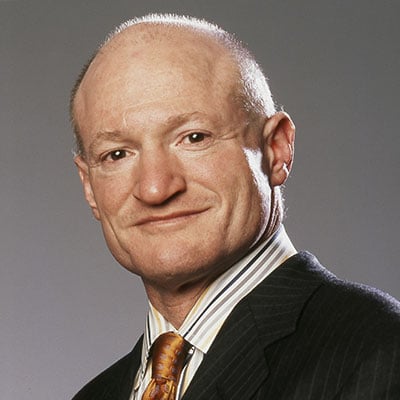In Memoriam: Bankruptcy Judge Burton Lifland
On Feb. 20, the legal community, and the restructuring bar especially, will remember a legend. On that date, the U.S. Bankruptcy Court for the Southern District of New York will host a memorial service and courtroom dedication ceremony in honor of Judge Burton R. Lifland, who passed away last month after 34 years of distinctly notable service on the bench.
Along with probably every attorney who practiced bankruptcy law over the last three decades, we were fortunate to have benefited from Lifland’s profound impact on modern insolvency jurisprudence — and it is from this vantage point that we write this remembrance to share our perspectives on his remarkable legacy.
Much has already been published about the many highlights of Lifland’s career, and we will not attempt to repeat all of those details here. Suffice to say, after approximately 25 years in private practice, Burt Lifland was appointed to the bench in 1980.
Beyond his dozen years as chief judge of one of the most influential bankruptcy courts in the country (due in no small part to his leadership), Lifland spearheaded multiple groundbreaking initiatives, such as the United Nations Commission on International Trade Law (UNCITRAL) Model Law on Cross-Border Insolvency, the asbestos trust structure that led to the enactment of 11 U.S.C. § 524(g), the implementation of one of the first electronic court filing systems, and the use of outside claims agents — to cite just a few examples.
And, hardly an afterthought, Lifland also presided over several of the most significant bankruptcy cases in history, including Johns-Manville, R.H. Macy, Bethlehem Steel, Blockbuster and Madoff.
On that front, our firm experienced firsthand Lifland’s unique skills as a jurist. Edward Sassower and Stephen Hessler represented Calpine Corp. in its Chapter 11 cases, which were the sixth-largest ever at the time of filing (in 2005), involving more than $17 billion of funded debt and 270 debtors. Calpine featured the full range of hallmarks of Lifland’s approach to administering cases; put simply, he was proactive, pragmatic and innovative.
Lifland routinely summoned counsel into chambers’ conferences that featured a candid discussion with his honor — followed by justifiably tempered expectations. Lifland was undeterred from issuing controversial (and likely to be appealed) rulings, if doing so would advance the case further towards a confirmable plan of reorganization.
And, as to his creativity, Calpine featured more than $15 billion in claims filed by Canadian affiliates against the U.S. debtors. Applying his expertise in international insolvency issues, Lifland (with his Canadian counterpart) implemented an unprecedented cross-border protocol that ultimately facilitated a global settlement.
We also note Lifland’s commitment to the next generation of insolvency professionals. Most significantly, Aaron Slavutin recently clerked for Lifland, who, in chambers, consistently encouraged his clerks to distill legal matters into threshold issues and actionable considerations. Indeed, he would often respond to his clerks’ unnecessarily complex analyses by pointing to one of his favorite hats hanging in the corner of his office that read: “K.I.S.S.: Keep It Simple Stupid.”
He would then ask a few questions that, inevitably, led the clerk sitting opposite him to hone in on the most critical issue(s). Like counsel who appeared before him, his clerks appreciated not only his ability to drive parties to focus on the most pressing considerations, but also that he did so with a memorable turn of phrase, or a colorful metaphor.
Similarly, James Sprayregen, Sassower and Hessler teach a restructuring course at the University of Pennsylvania for law school and Wharton students. In Spring 2013, Lifland was gracious enough to travel to Philadelphia and participate in a Calpine panel for the class — and attend a reception afterwards for students interested in bankruptcy-related careers. His willingness to commit his time, energies and insights to encouraging dozens of young men and women to join our profession — and to meaningfully educating them about the challenges and opportunities inherent in that career choice — was incredibly inspiring to the students (and professors).
Quite poignantly, on the occasion of receiving the Distinguished Service Award from the American College of Bankruptcy in 2013, Lifland told an anecdote that captured the reasons for his dedication to restructuring law:
"Johns Manville, the first mass torts case seeking a bankruptcy solution, was like the proverbial camel that gets its nose in the tent. The first look at that nose never lets you size up the rest of it as it squeezes its way inside. On the first day of the case, in 1982, [debtors’ counsel] emphasized that this is a simple matter of some $50 million measured by a tobacco-use causation, to be dealt with with a one-size-fits-all claims adjudication process ....
Well, scores of years later, we bear witness to the effects of an evergreen, ongoing trust that has distributed more than $4 billion and thus far with more to come; to adoption by Congress of a statute, 11 U.S.C. § 524(g), which is modeled on the Manville confirmation order; and to a perpetual litigation pingpong through the courts, including several trips to the Supreme Court, and which is continuing to the present day without an end in sight.
I find that this genre of cases is sufficiently interesting and challenging to foster my desire to remain on the bench...."
All of us who care about the future of restructuring are grateful that Lifland was interested and challenged for more than three decades of exceptional public service. We practice in the shadow of his accomplishments — and we are confident the next generation of restructuring professionals will continue to honor the breadth and depth of Lifland’s innovative jurisprudence for years to come.
REPRINTED WITH PERMISSION FROM THE FEBRUARY 19, 2014 EDITION OF LAW360 © 2014 PORTFOLIO MEDIA INC. ALL RIGHTS RESERVED. FURTHER DUPLICATION WITHOUT PERMISSION IS PROHIBITED


